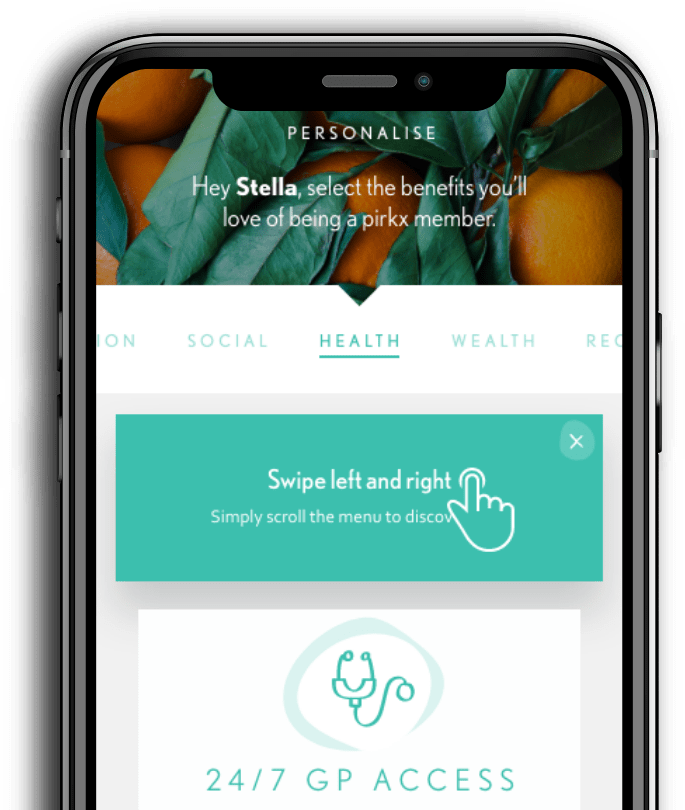- 15 March 2024
- Nici Jupp at pirkx
-
3 minutes read
Finding the Right Fit - Strategies for Strategic Talent Acquisition

Talent acquisition is more than just filling positions. It's about finding the right alignment—that perfect candidate who not only has the skills, qualifications and experience but also aligns with the company's culture, values, and long-term goals. Not a small order. Proper talent acquisition involves a proactive approach of sourcing, attracting, and retaining. Here are some of the tops things we think you should consider when trying to find your perfect match.
Define Your Ideal Profile: Before you start searching for candidates, it's crucial to clearly define exactly what you're looking for. Work collaboratively to create a detailed candidate profile outlining the skills, experience, and attributes necessary for success in the role. Additionally, consider factors such as values alignment, and long-term potential within the company.
Build a Strong Employer Brand: As highlighted in Week Two of our recruitment series, a compelling employer proposition positioned through your employer brand can significantly impact your ability to attract the right talent. Highlight your company's unique culture, values, and opportunities for growth through various channels such as your website, social media, and employee testimonials. Showcase what sets you apart and why candidates would want to work for you.
Use Multiple Sourcing Channels: Relying solely on traditional job postings may limit your candidate pool. Expand your sourcing efforts by leveraging multiple channels such as job boards, professional networks, employee referrals, and recruitment agencies. Attend industry events, conferences, and career fairs to connect with potential candidates directly. This way you have a higher probability of attracting the right individual/s.
Focus on Diversity and Inclusion: Embrace diversity and inclusion in your talent acquisition efforts to foster innovation, creativity, and a more dynamic workplace culture. Actively seek out candidates from diverse backgrounds and ensure that your hiring process is bias-free and inclusive. Promote diversity initiatives both internally and externally to attract a broader range of candidates. Look at the demographics of the channels you are using to promote your roles and employer brand. Consider how you can position your business through a wide variety of channels and events.
Offer Competitive Compensation and Benefits: In addition to the intrinsic aspects of the job, competitive compensation and benefits packages are essential for attracting top talent. Research industry standards and benchmark your offerings to ensure they remain attractive to prospective candidates. Consider flexible work arrangements, professional development opportunities, and other perks that can enhance your employer value proposition. Where possible offer flexible benefits, so the individuals can choose those that are important to them, not others. After all, we’re not all the same.
Invest in Talent Development and Retention: Once you've successfully recruited your new team member/s, focus on their ongoing development and retention. Provide opportunities for skill enhancement, career advancement, and meaningful work experiences. Foster a supportive and inclusive work environment where employees feel valued, engaged, and motivated to stay long-term. There’s no point finding the right individual/s if they’re gone before the work gets started! Onboarding is a vital part of the process and your opportunity to really engage the individual/s, so they quickly feel part of your company, want to stay and give it their best. After all, both you and your new team member want them to be contributing as quickly as possible.
In summary, strategic talent acquisition goes beyond filling vacancies—it's about finding the right people who will contribute to your business's success and thrive in its culture. By implementing these strategies, you can attract, retain, and develop the right talent that will drive innovation, growth, and competitive advantage for your company.

- Nici Jupp
- Recruitment Superstar

Last Minute Christmas Gift Ideas Using pirkx
We are counting down the days to Christmas now, and some of you may be...
MORE- 18 December 2025
- Amy at pirkx

Autumn is Here
The evenings are becoming brisk, mornings feel darker, and the cold is...
MORE- 16 September 2025
- Amy at pirkx

Wellbeing at University - A Guide for Students and Those Supporting Them
Heading off to university is a huge step — exciting, yes, but also a little...
MORE- 28 August 2025
- Marketing at pirkx

Managing Results Day Stress
It’s that time of year again. Results day can be one of the most daunting...
MORE- 9 July 2025
- Amy at pirkx

World Wellbeing Week
We’ve had a fantastic week of weather here in the UK, and despite the heat,...
MORE- 20 June 2025
- Amy at pirkx

Latest Announcement
Rob joins as Interim-COO, building enterprise-level operational...
MORE- 14 May 2025
- Agatha Lobban at pirkx


Mental Health Awareness Month
May is Mental Health Awareness Month, a time to dedicate awareness to others...
MORE- 6 May 2025
- Amy at pirkx

Spring into Action
It’s finally March and spring has officially sprung. I almost forgot what it...
MORE- 24 March 2025
- Amy at pirkx

International Women Day 2025
It’s International Women’s Day! Let’s take this time to recognise the...
MORE- 28 February 2025
- Amy at pirkx

National Apprenticeships Week
It’s National Apprenticeships Week, and we’re here for it! At pirkx, we know...
MORE- 7 February 2025
- Amy at pirkx

Selecting Chicago as First US Entry and HQ
We are thrilled to announce that pirkx is expanding into Chicago! This...
MORE- 18 October 2024
- Aggie at pirkx

Top Tips to Make the Cinema More Special
Taking your kids to the cinema can be fun, but how an you make it extra...
MORE- 20 September 2024
- Aggie at pirkx

Making the Most of Your pirkx Membership This Autumn
🍂 Welcome Autumn! Making the Most of Your pirkx Membership This Season As...
MORE- 13 September 2024
- Aggie at pirkx

Back-to-School Survival Kit
As the back-to-school season approaches, many parents find themselves...
MORE- 31 August 2024
- Aggie at pirkx

The State Opening of Parliament - Our Key Takeaways
"My Government will seek a new partnership with both business and working...
MORE- 18 July 2024
- Aggie at pirkx

Summer Heatwave Hacks for Families
Summer Heatwave Hacks for Families: Stay Cool and Comfortable Together As...
MORE- 26 June 2024
- Aggie at pirkx

Technology and Human Care - The new NHS AI physiotherapy initiative
The future of physiotherapy is here The NHS has announced that the launch...
MORE- 14 June 2024
- Aggie at pirkx

What is Quiet Quitting
According to recent research by Towergate Health and Protection, quiet...
MORE- 6 June 2024
- Aggie at pirkx

How pirkx Can Ease Exam Stress
Exam pressure can be overwhelming. From late-night study sessions to managing...
MORE- 9 May 2024
- Aggie at pirkx

Understanding Burnout
In today's working landscape, burnout has become an all too common...
MORE- 3 May 2024
- pirkx at pirkx

Your Recruitment Communication Checklist
In recruitment, effective communication can make or break your chances of...
MORE- 8 March 2024
- Nici Jupp at pirkx

PECRO Week Three - Crafting a Compelling EVP
According to recent research by Gettsbury College, the average person will...
MORE- 1 March 2024
- Nici Jupp at pirkx

Envisioning Wellbeing - 5 Daily Habits for Healthy Eyes
With the hustle and bustle of daily life it can become all too easy to...
MORE- 29 February 2024
- Aggie at pirkx at pirkx

The Role of Planning in Talent Acquisition
When recruiting, it can be easy to quickly jump in feet first. To think about...
MORE- 16 February 2024
- Nici Jupp at pirkx

Unlocking Talent With Our Latest Brand Ambassador
We are delighted to announce our newest Brand Ambassador with the fabulous...
MORE- 9 February 2024
- Nici Jupp x pirkx at pirkx

Easing the Transition - HR Strategies for a Smooth Return to Work After the Festive Break
As the ever-enticing festive break draws near, it is essential for businesses...
MORE- 22 December 2023
- HR Katie x pirkx at pirkx

A Nightmare Before Christmas - HR Tips For December
With Christmas jumper days starting and office party outfits being picked it...
MORE- 8 December 2023
- HR Katie X pirkx at pirkx

Making your Business the Place to Be - Attracting and Retaining Talent as an SME
When you’re competing with canteens and gym memberships, figuring out how to...
MORE- 1 December 2023
- HR Katie and pirkx at pirkx

Workplace Gymnastics - Flexible and Hybrid Working as an SME
If you had told yourself five years ago that choosing the ideal Zoom...
MORE- 24 November 2023
- HR Katie at pirkx

Getting HR Confident - HR Katie and pirkx
We all know that for businesses, team member’s wellbeing is vital to success....
MORE- 17 November 2023
- Aggie at pirkx

The Importance of Protecting the Planet and Prioritising Human Health and Wellbeing
The health of the planet is intimately connected with the health of humans....
MORE- 10 October 2023
- Aggie at pirkx

Scans made simple
Here at Team pirkx we are always looking for new ways to help you to...
MORE- 1 September 2023
- Aggie at pirkx

Putting the Brollies Back Up - Making the Most of the End of British Summer
As this year’s summer season comes to a close, it’s important to...
MORE- 24 August 2023
- Aggie at pirkx

pirkx Partners with the Society of Virtual Assistants
At pirkx, we've always believed that all workers should have the ability to...
MORE- 17 August 2023
- Aggie at pirkx

Revolutionise workplace wellbeing with pirkx - flexibility and affordability
Welcome to the pirkx blog, a place where we're excited to connect with you on...
MORE- 14 July 2023
- Alan Purnell at pirkx

Cut School Uniform Costs
For all parents across the UK, the cost of school uniform can be a...
MORE- 7 July 2023
- Aggie at pirkx

Prioritising Contract Worker Mental Wellbeing
Mental health affects individuals within all professional fields. However,...
MORE- 7 June 2023
- Aggie at pirkx

Embracing Mental Health Awareness Week - Overcoming Anxiety
May 15th to 21st marks Mental Health Awareness Week here in the UK and this...
MORE- 19 May 2023
- Alan Purnell at pirkx

Freelancers you could get work perks - read this
What if you had work perks as a freelancer working anywhere in the world? Now...
MORE- 22 March 2023
- Naida Allen at pirkx

Our sponsorship of the National Hair & Beauty Federation’s Top 100 Influencers
Last night I had the honour of attending the National Hair & Beauty...
MORE- 15 November 2022
- Stella Smith at pirkx

Worry at work
It’s no secret that balancing our work and personal lives can be challenging;...
MORE- 12 October 2022
- Alan Purnell at pirkx

A very proud day for me and my team at pirkx
I am so pleased to announce that we have raised £3 million in a pre-Series A...
MORE- 14 June 2022
- Stella Smith at pirkx

The New Era of Employment: The Gig Economy
The last year has put a microscopic focus on the way companies, and...
MORE- 12 May 2021
- Matthew Lowman at pirkx

Creating Uplifting Workplace Environments
The pace of technological change, always-on culture and change in consumer...
MORE- 30 March 2021
- Petra Velzeboer at pirkx

Can my food intake boost my immunity to fight illness?
What to eat to reduce your chance of becoming ill A healthy gut...
MORE- 30 March 2021
- Dr Natalie Mitchell at pirkx






